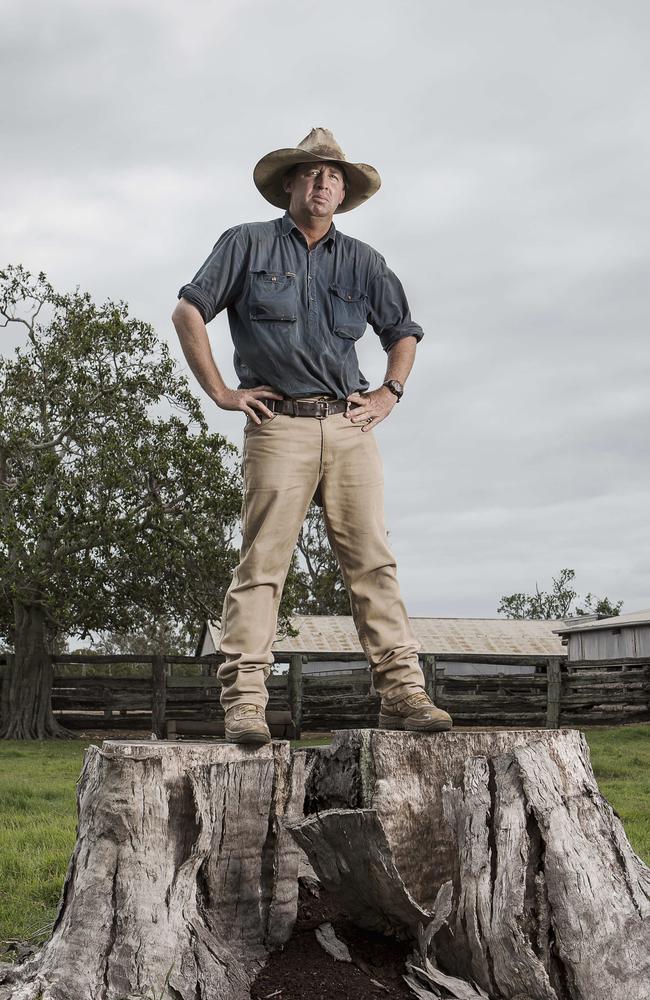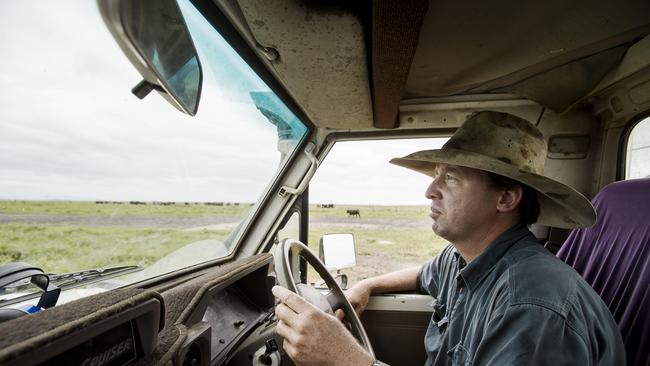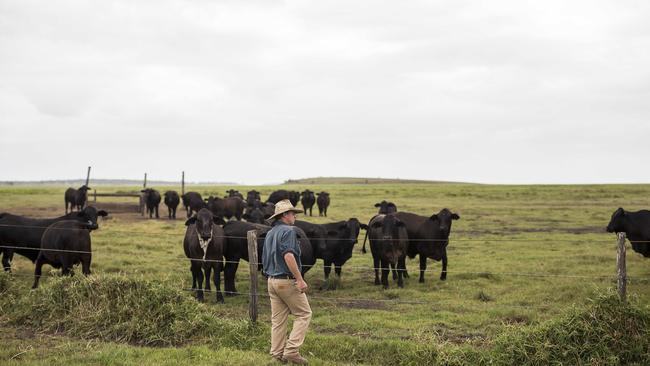Rural rates skyrocket for Central Qld cattle property owners
There are new fears Queensland graziers are reaching breaking point with revelations some are being charged more than $100,000 annually in rural rates from their local council.

A Central Queensland cattle property owner has revealed he is paying more than $90,000 a year in council levied rates and others are paying even more - figures which have been labelled “unfair and unsustainable.”
The Geddes family has run the 10,000 hectare Couti Outi Station, near Shoalwater Bay in Livingstone Shire, north of Rockhampton, for more than 140 years and Lawson Geddes Jr is very worried about the current situation facing rural ratepayers.
Lawson and fellow generational grazier Bill Geddes made a deputation to Livingstone Shire Council this week to raise their concerns.
“Currently on Couti-Outi, we pay $90,360 per annum in rates,” Lawson said.
He said a neighbour was paying more than $100,000 a year.
“And this is just in my area.
“In three years, my family’s rates have risen by $23,864 per year - or 26.45 per cent.
“In 10 years, they’ve increased by 37 per cent.
“This is unsustainable.”
Lawson said his rates bill was money he had to pay before he fed a cow, hired an employee, put fuel in his car, fed his family, sent his children to school, paid a power bill or sprayed a weed.
“However unlike the aforementioned, it doesn’t lift my productivity,” he said.

Lawson said on Couti-Outi they ran 600 breeders and fattened 290 homebred bullocks, after losses.
“This process takes around two-and-a-half years to get from a calf to a bullock, before they’re sent off to the meatworks.
“The last bullocks I sent returned $1820 which was up a bit on last time I was here.
“So I must sell 50 of my homebred bullocks for the council (rates) or 17 per cent of my homebred bullocks on my place just to pay my rates.
“Is this a meaningful contribution?”
While addressing Livingstone’s councillors, Lawson said he was “not here to lay blame, yell, kick or scream.”

“I just want to try and find a meaningful solution for myself and all the rural landholders, and indeed people in the shire as a whole.
“Because it’s just not sustainable.”
Bill Geddes, who grew up on his family’s Doonside property, said rural rates were now at a level that was “unfair” and the issue required “a positive approach” not just from local councils but also the State Government.
“We’ve been on the same bit of country for 150 years,” Bill said.
“The concerning part is how quickly it (unimproved land valuation) is rising - we’re up against another property value rise in August and it can’t jump to the per cent that it’s jumped since 2019.
“I think some of this needs to be brought back into line and have some critical thinking put back into whether we’re functioning at a level than can be sustained. “

Bill also said there was “a disconnect” between what rural ratepayers were being charged and what services they were receiving.
“And without going down the road (of) infrastructure side of things - I want to keep that separate - we are supposed to be exempt from land tax.
“But if we are getting a considerable amount more put on our rates and we’re not receiving that (in services), we’re basically getting land taxed.
“And no matter how you look at that, that’s what we’re receiving, so we need to work out how to get that back down.”
Lawson explained to councillors how he would like to see a change to Livingstone’s current regime where it had two rural rate bands.
“Our solution is to increase the number of bands as has been done in other shires, and to great effect.
“So as your property values rise - which they will because they’re not making any more of it (rural country) - this allows the valuations to increase but they (more rate bands) will lower the cents in the dollar which keeps rates at a fair and meaningful contribution for all concerned.”
Lawson spoke about the Banana Shire Council’s model which had several rural rate bands.
“We all agree in the (Livingstone) shire we must pay our way, but the current rating system is unsustainable and needs to be resolved immediately for all concerned.”
Earlier this month it was revealed that outstanding rates eligible for collection in Livingstone Shire stood at just over $7 million - a figure higher than the same time last year as the cost of living crisis bites hard.
It was further revealed that 549 of the shire’s 18,490 rateable properties were under rates collection management.
After Lawson and Bill presented their deputation this week, councillor Andrea Friend said following Lawson’s previous deputation on this issue, the council had immediately resolved “to review the rates.”

“And I can say that we are certainly honouring that resolution,” Ms Friend said.
“We are in early stages but we are certainly honouring that resolution as a council table.
“But for you being here today and giving us a refresh of your opinions and your suggestions, that will go a long way in these budgetary deliberations - thank you very much, gentlemen.”
Councillors voted unanimously to receive the deputation.
When asked by this publication why Livingstone did not have the same rural rating system as Banana Shire, a Livingstone Shire Council spokesperson said “no two councils are the same and that is reflected in their approach to rating.”
“Rating decisions are multi-factored and a reflection of a community’s willingness to pay for facilities and services that they want or need.
“Livingstone also has a different rating category profile to Banana Shire Council, different services and infrastructure and community requirements.”
The council spokesperson said each year, as part of the budget process, the council decided the rates and charges for the financial year. “Officers began this preparation work in November - the budget process will be complete when the council adopts its budget in July.
“There was a genuine desire amongst councillors to explore options to relieve the burden on rural ratepayers, but the exact detail (and the consequences of doing so) need to be considered in its entirety as part of the overall budget compilation.
“The matters raised by Mr Geddes and other rural ratepayers will be properly considered and debated with a view to finding a fair outcome for all.”
More Coverage
Originally published as Rural rates skyrocket for Central Qld cattle property owners





